Modulenotfounderror No Module Named Mysql
What is a ModuleNotFoundError?
In Python, a module is a file containing Python definitions and statements. It can be considered as a library that holds reusable pieces of code. These modules can either be built-in or created by third-party developers. The import statement is used to import these modules into a Python script, allowing us to use the functions and classes defined within them.
A ModuleNotFoundError occurs when Python is unable to find the specified module that is being imported. This error message indicates that the module named ‘mysql’ cannot be found.
Why does the ‘ModuleNotFoundError: No module named mysql’ error occur?
The ‘ModuleNotFoundError: No module named mysql’ error typically occurs when the Python interpreter is unable to locate the MySQL connector module. There can be several reasons why this error occurs:
1. The MySQL connector module is not installed: The error can occur if the MySQL connector module is not installed on the system.
2. Incorrect installation method: If the MySQL connector module is not installed using the correct installation method, the Python interpreter may not be able to locate it.
3. Compatibility issues: The Python version and the MySQL connector module may not be compatible with each other, causing the error to occur.
4. Typos or case sensitivity: If there are typos or if the case of the module name is incorrect in the import statement, the Python interpreter will not be able to find the module.
How to resolve the ‘ModuleNotFoundError: No module named mysql’ error?
To resolve the ‘ModuleNotFoundError: No module named mysql’ error, you can follow these steps:
1. Check if the MySQL connector module is installed:
Open a terminal or command prompt and enter the following command to check if the MySQL connector module is installed:
“`
pip show mysql-connector-python
“`
If the module is installed, it will display the information about the installed package. If it is not installed, you need to proceed to the next step.
2. Install the MySQL connector module using pip:
To install the MySQL connector module, run the following command in the terminal or command prompt:
“`
pip install mysql-connector-python
“`
This command will download and install the latest version of the MySQL connector module.
3. Verify the installation of the MySQL connector module:
After installing the module, you can verify if it has been installed correctly. Run the following command:
“`
pip show mysql-connector-python
“`
It should now display the information about the installed package, indicating that the installation was successful.
4. Check the Python version and MySQL connector compatibility:
Ensure that the version of Python you are using is compatible with the installed MySQL connector module. Some versions of the MySQL connector module may require specific versions of Python. Check the documentation or the official website of the MySQL connector module for compatibility information.
5. Check for typos and case sensitivity in the module name:
Double-check the import statement in your Python script for any typos or incorrect case sensitivity. The module name should match exactly as it is installed.
6. Ensure correct module import syntax in the Python script:
The correct syntax for importing the MySQL connector module is:
“`python
import mysql.connector
“`
Make sure that the import statement is placed correctly in your Python script.
FAQs:
Q: What is MySQL Connector/Python?
A: MySQL Connector/Python is a Python driver that helps you to connect to MySQL database and work with it using Python programming language.
Q: How to install MySQL connector module using pip?
A: You can install the MySQL connector module using the following command:
“`
pip install mysql-connector-python
“`
Q: I’m getting ‘ImportError: mysql connector Python c extension not available’ error. What should I do?
A: This error indicates that the C extension required by the MySQL connector module is not available. Make sure you have the necessary dependencies installed and try installing the module again.
Q: Can I use Conda to install the MySQL connector module?
A: Yes, you can use Conda to install the MySQL connector module. Run the following command:
“`
conda install mysql-connector-python
“`
Q: What should I do if the ‘ModuleNotFoundError: No module named mysql’ error persists?
A: If the error still occurs after following the above steps, you might need to uninstall and reinstall both Python and the MySQL connector module. Verify that the installation paths and environment variables are correctly set.
In conclusion, the ‘ModuleNotFoundError: No module named mysql’ error occurs when Python cannot find the specified MySQL connector module. By following the steps mentioned above and ensuring proper installation and configuration, you should be able to resolve this error and successfully import the mysql module.
No Module Named Mysql.Connector | Python Mysql Connection Error Solved | Modulenotfounderror
How To Install Mysql Module In Python3?
Python is a versatile and powerful programming language, widely used for developing applications, scripting, and automation. It offers a rich set of libraries and modules that enhance its capabilities and allow developers to build robust and scalable solutions.
One of the most popular database management systems is MySQL, which provides an efficient way to store and retrieve data. In this article, we will explore how to install the MySQL module in Python 3, enabling you to connect and interact with MySQL databases from your Python applications.
Step 1: Installing Required Packages
Before we can install the MySQL module, we need to ensure that our system has the necessary packages installed. Open your terminal or command prompt and execute the following command:
“`
$ sudo apt-get install python3-dev libmysqlclient-dev
“`
This command will install the required development files and libraries necessary for building the MySQL module.
Step 2: Installing the MySQL Module
There are several ways to install the MySQL module for Python 3, but the most common and recommended method is using the pip package manager. Pip is a package installer for Python that simplifies the process of installing and managing libraries.
To install the MySQL module via pip, use the following command:
“`
$ pip3 install mysql-connector-python
“`
This command will download and install the latest version of the MySQL module from the Python Package Index (PyPI).
Alternatively, if you prefer to use the official MySQL Connector/Python, you can download it from the MySQL website and install it manually.
Step 3: Verifying the Installation
To verify that the MySQL module has been successfully installed, you can run a Python script that imports the module and checks for any errors. Open a text editor or your preferred IDE and create a new Python script with the following code:
“`python
import mysql.connector
print(“MySQL module has been successfully installed!”)
“`
Save the script with a .py extension, such as `verify_installation.py`. Open your terminal or command prompt and navigate to the folder where you saved the script. Then, execute the following command:
“`
$ python3 verify_installation.py
“`
If everything is set up correctly, you should see the message “MySQL module has been successfully installed!” printed in the terminal.
FAQs:
Q: I encountered an error during the installation process. What should I do?
A: If you encounter any errors during the installation, ensure that you have the necessary permissions to install packages on your system. If you are using a Windows machine, run the command prompt as an administrator. On Linux or macOS, use the `sudo` command before the installation command. Also, ensure that you have an active internet connection and that the MySQL server is running.
Q: Can I install the MySQL module using a virtual environment?
A: Yes, it is highly recommended to use a virtual environment for your Python projects, especially if you are working on multiple projects with different dependencies. After activating your virtual environment, follow the installation steps as mentioned above.
Q: How can I connect to a MySQL database using the MySQL module?
A: To connect to a MySQL database using the MySQL module, you need to provide the necessary connection details such as the host, user, password, and database name. Here’s an example code snippet that establishes a connection:
“`python
import mysql.connector
mydb = mysql.connector.connect(
host=”localhost”,
user=”yourusername”,
password=”yourpassword”,
database=”yourdatabase”
)
print(“Connection established!”)
“`
Replace `localhost`, `yourusername`, `yourpassword`, and `yourdatabase` with your specific database connection details.
Q: Are there any alternatives to the MySQL module for Python?
A: Yes, there are alternative MySQL modules for Python, such as PyMySQL, MySQLdb, and SQLAlchemy. Each module has its own set of advantages and usage scenarios. It’s recommended to choose the module that best fits your specific requirements and project constraints.
In conclusion, installing the MySQL module in Python 3 opens up a wide range of possibilities for interacting with MySQL databases from your Python applications. By following the steps outlined in this article, you will be able to incorporate the power of MySQL into your Python projects seamlessly.
How To Install Connector Python Mysql?
MySQL is one of the most widely used open-source relational database management systems. It offers excellent performance, stability, and flexibility for various types and sizes of projects. If you are a Python developer and planning to work with MySQL databases, one of the essential tools you will need is the Connector/Python. In this article, we will walk you through the step-by-step process of installing Connector/Python and answer some frequently asked questions about the installation.
## What is Connector/Python?
The Connector/Python is a pure Python implementation of the MySQL protocol. It allows Python programs to connect to and interact with MySQL databases seamlessly. It is a driver that enables you to communicate with the MySQL server, execute SQL statements, and retrieve data from the database using Python. The Connector/Python provides compatibility with the Python DB API version 2.0, making it easy to integrate with existing Python applications.
## Step-by-Step Installation Process:
Before starting the installation process, ensure that you have an active internet connection, a compatible version of Python installed on your system, and administrative rights to install packages.
1. Open your command prompt or terminal.
2. To install Connector/Python, you can use the pip package manager, which comes pre-installed with Python 2.7.9 and later versions. Enter the following command to install the latest version:
“`
pip install mysql-connector-python
“`
If you already have an older version of Connector/Python installed, you can upgrade it to the latest version using the following command:
“`
pip install –upgrade mysql-connector-python
“`
3. Wait for the installation to complete. The package will be fetched from the Python Package Index (PyPI) and installed on your system.
4. Once the installation is finished, you can verify if the Connector/Python package is successfully installed using the following command:
“`
python -c “import mysql.connector; print(mysql.connector.__version__)”
“`
This command will print the version of Connector/Python installed on your system.
5. Congratulations! You have successfully installed Connector/Python. Now, you can start using it in your Python programs to connect to and interact with MySQL databases.
## Frequently Asked Questions (FAQs):
Q1. What is the minimum Python version required for Connector/Python?
A1. Connector/Python requires Python 2.7 or later versions, including Python 3.x. It is highly recommended to use the latest stable version of Python.
Q2. Can I use Connector/Python on Windows, macOS, or Linux?
A2. Yes, Connector/Python is cross-platform and can be used on Windows, macOS, and various Linux distributions.
Q3. Can I install Connector/Python within a virtual environment?
A3. Yes, it is possible to install Connector/Python within a virtual environment. Simply activate your virtual environment and follow the installation steps mentioned earlier.
Q4. Is there any alternative to pip for installing Connector/Python?
A4. Yes, if you prefer not to use pip, you can manually download the Connector/Python package from the official MySQL website and install it using the provided installer.
Q5. Are there any additional dependencies or requirements for Connector/Python?
A5. No, Connector/Python does not have any external dependencies. It is a self-contained package that includes everything required for connecting to MySQL databases using Python.
Q6. How can I uninstall Connector/Python?
A6. To uninstall Connector/Python, you can use the pip package manager. Open your command prompt or terminal and enter the following command:
“`
pip uninstall mysql-connector-python
“`
Confirm the uninstallation when prompted.
## Conclusion:
Installing Connector/Python is a straightforward process that enables Python developers to connect to MySQL databases and perform various operations seamlessly. By following the step-by-step instructions provided in this article, you can quickly get Connector/Python up and running on your system. Whether you are working on a small project or a large-scale application, Connector/Python is a valuable tool that simplifies your interaction with MySQL databases. Happy coding!
Note: The installation steps provided in this article are accurate at the time of writing. However, it is always recommended to refer to the official documentation or the official MySQL website for the latest installation instructions and updates.
Keywords searched by users: modulenotfounderror no module named mysql MySQL Connector/Python, Pip install mysql, Pip install mysql-connector, Import mysql-connector could not be resolvedpylance, ImportError mysql connector Python c extension not available, Conda install mysql connector, MySQL Connector, Import MySQL connector-Python
Categories: Top 93 Modulenotfounderror No Module Named Mysql
See more here: nhanvietluanvan.com
Mysql Connector/Python
Introduction
In today’s digital era, the ability to seamlessly integrate different technologies is crucial for developers and businesses alike. One popular combination is the use of Python, a versatile and powerful programming language, with MySQL, an open-source relational database management system. To bridge the gap between these two technologies, MySQL Connector/Python comes into play. In this article, we will explore what MySQL Connector/Python is, how it works, and why it is an essential tool for Python developers working with MySQL databases.
What is MySQL Connector/Python?
MySQL Connector/Python is a Python driver that provides an interface for connecting Python applications with MySQL databases. It allows Python developers to interact with MySQL databases, execute queries, and retrieve data using Python programming language. The driver is developed and maintained by the MySQL team at Oracle Corporation, ensuring its stability, reliability, and compatibility with the latest versions of Python and MySQL.
How Does MySQL Connector/Python Work?
MySQL Connector/Python builds on the strengths of both Python and MySQL to offer a seamless integration experience. By utilizing standard Python libraries and protocols, it provides a high-level API for interacting with MySQL databases. The driver supports both Python 2.7 and Python 3.x versions, ensuring compatibility with different Python environments. MySQL Connector/Python is implemented using pure Python, resulting in a platform-independent, lightweight, and easy-to-use driver.
Key Features and Benefits
1. Ease of Use: MySQL Connector/Python offers a straightforward and intuitive API, making it easy for Python developers, regardless of their experience level, to connect with MySQL databases. Its simplicity allows developers to focus on writing efficient and optimized code rather than dealing with complicated database connections.
2. High Performance: The driver utilizes MySQL’s native C protocol, allowing for efficient and fast communication between Python and MySQL databases. It leverages the advantages of both Python and MySQL, ensuring optimal performance for data retrieval, transaction handling, and query execution.
3. Data Integrity and Security: MySQL Connector/Python supports secure communication between the Python application and the MySQL server. It offers various authentication mechanisms, encryption options, and SSL/TLS support, ensuring the integrity and confidentiality of data exchanged between the Python application and the MySQL database.
4. Connection Pooling: Connection pooling is a technique that allows multiple connections to be created and reused by different Python threads or processes efficiently. MySQL Connector/Python provides built-in connection pooling support, optimizing resource usage and minimizing overhead related to establishing new connections for each query execution.
5. Support for Advanced MySQL Features: MySQL Connector/Python includes support for advanced MySQL features such as stored procedures, prepared statements, transaction control, and server-side cursors. These features enhance the capabilities of Python applications by enabling them to interact with complex database structures and execute sophisticated operations.
6. Cross-platform Compatibility: MySQL Connector/Python is compatible with major operating systems, including Windows, Linux, macOS, and various Unix variants. It ensures that Python developers can seamlessly integrate with MySQL databases regardless of their development environment.
FAQs (Frequently Asked Questions)
Q1: Where can I download MySQL Connector/Python?
A1: MySQL Connector/Python can be downloaded from the official MySQL website (https://dev.mysql.com/downloads/connector/python/). It is available for both Windows and Unix-based operating systems.
Q2: How do I install MySQL Connector/Python?
A2: Once the driver is downloaded, installation can be done using the standard Python package manager, pip. Open a command prompt or terminal and run the command “pip install mysql-connector-python”.
Q3: How do I establish a connection to a MySQL database using MySQL Connector/Python?
A3: Here’s an example of connecting to a MySQL database using MySQL Connector/Python:
“`python
import mysql.connector
mydb = mysql.connector.connect(
host=”localhost”,
user=”yourusername”,
password=”yourpassword”,
database=”yourdatabase”
)
print(mydb)
“`
Q4: How do I execute a query using MySQL Connector/Python?
A4: You can execute queries using the execute() method of the MySQLCursor object. Here’s an example:
“`python
import mysql.connector
mydb = mysql.connector.connect(
host=”localhost”,
user=”yourusername”,
password=”yourpassword”,
database=”yourdatabase”
)
mycursor = mydb.cursor()
mycursor.execute(“SELECT * FROM customers”)
result = mycursor.fetchall()
for row in result:
print(row)
“`
Q5: Can MySQL Connector/Python be used with an ORM (Object-Relational Mapping) framework?
A5: Yes, MySQL Connector/Python can be used with popular Python ORMs such as SQLAlchemy and Django ORM. It provides a seamless integration experience, allowing you to leverage the benefits of both MySQL Connector/Python and the ORM of your choice.
Conclusion
MySQL Connector/Python provides Python developers a robust and efficient means to integrate their applications with MySQL databases. Its easy-to-use API, high performance, and support for advanced MySQL features make it an indispensable tool for Python developers working with MySQL. Whether you are building a small application or a large-scale enterprise system, MySQL Connector/Python simplifies the process of connecting, querying, and managing your MySQL databases from Python. By harnessing the power of Python and MySQL together, you can create reliable and scalable applications that leverage the full potential of these two technologies.
Pip Install Mysql
In the world of software development, databases play a crucial role in storing and retrieving data efficiently. MySQL, one of the most widely used open-source relational database management systems, is known for its robustness, scalability, and ease of use. As a Python developer, integrating MySQL into your projects can be essential for creating powerful and dynamic applications. To achieve this, one must understand the process of installing MySQL via pip, a package manager for Python.
What is pip?
Pip is a package management tool for Python that allows users to install, uninstall, and manage Python packages effortlessly. It simplifies the process of dependency management and ensures that all required packages are readily available during project development.
Why use MySQL?
MySQL is not only known for its performance, but it also offers a wide range of features that make it an ideal choice for developers. Some of the key advantages of using MySQL include:
1. Reliability: MySQL is known for its stability and durability, ensuring that your data is secure and accessible.
2. Scalability: Whether you’re working on a small application or a large-scale enterprise project, MySQL can handle the increasing data demands efficiently.
3. Security: MySQL provides advanced security features, including SSL support, encrypted connections, and user authentication mechanisms, to safeguard your data.
4. Cross-platform compatibility: MySQL is compatible with various operating systems, including Windows, macOS, and Linux, allowing developers to work seamlessly across different platforms.
Installing MySQL via pip:
To install MySQL using pip, make sure you have Python and pip installed on your system. If not, you can download and install them from the Python official website (https://www.python.org). Once you have Python and pip set up, follow the steps below:
Step 1: Open the command prompt (Windows) or terminal (macOS/Linux).
Step 2: Run the following command to install the MySQL connector package:
“`shell
pip install mysql-connector-python
“`
Step 3: Sit back and relax as pip downloads and installs the MySQL connector package for Python.
It’s important to note that the `mysql-connector-python` package is a pure Python implementation of the MySQL client. However, if you require a faster option, you can consider using `mysqlclient`, which is a Python interface to MySQL written in C.
Common Issues and FAQs:
Q: I encountered an error message stating “pip is not recognized as an internal or external command.” What should I do?
A: This error occurs when pip is not in your system’s PATH variable. To resolve this, you can try using the full path to pip, for example, `C:\path\to\python\Scripts\pip install mysql-connector-python`.
Q: Can I use pip to install MySQL directly without any packages or drivers?
A: No, pip only handles the installation of Python packages. To connect to a MySQL server, you need to install a MySQL connector package explicitly. The `mysql-connector-python` package is widely used and recommended for most scenarios.
Q: Is it possible to install older versions of the MySQL connector?
A: Yes, you can specify a particular version of the package during the installation process. For instance, `pip install mysql-connector-python==8.0.23` will install version 8.0.23.
Q: I am using a virtual environment for my Python project. Should I install MySQL inside the virtual environment?
A: It depends on your project requirements. If your project relies on MySQL, it is generally recommended to install the package within your virtual environment to isolate dependencies.
Q: How can I verify if MySQL is installed correctly?
A: You can verify the installation by writing a simple Python program that imports the MySQL connector package. If the import statement runs without any errors, it means the installation was successful.
Q: Are there any additional dependencies or configurations needed after installing the MySQL package?
A: No, the `mysql-connector-python` package handles all the necessary dependencies internally. However, you may need to configure the connection parameters to establish a successful connection with your MySQL server.
In conclusion, integrating MySQL into your Python projects is made simple with the help of pip. By installing the `mysql-connector-python` package, you gain access to a powerful toolset for working with MySQL databases. Remember to address any installation issues by verifying the PATH variable, installing compatible versions, and leveraging virtual environments if needed. With MySQL and Python working together, you can build robust and scalable applications that leverage the strengths of both technologies. Happy coding!
Pip Install Mysql-Connector
When it comes to connecting Python with a MySQL database, one of the most popular modules used by developers is mysql-connector. This module allows Python programs to access MySQL databases and perform various operations such as creating, deleting, or modifying tables, executing SQL queries, fetching results, and more. In this article, we will take a comprehensive look at how to install mysql-connector using pip, its features, and some frequently asked questions.
Installation:
Pip, the package installer for Python, provides an easy way to install mysql-connector. Before we proceed with the installation, make sure you have pip installed on your system. If not, you can install it by running the following command:
“`
$ python -m ensurepip –upgrade
“`
Now, to install mysql-connector, open your terminal and type the following command:
“`
$ pip install mysql-connector
“`
Once the installation is successful, you are ready to start using mysql-connector and connect Python with your MySQL database.
Features:
1. Connection Establishment:
The mysql-connector module allows you to establish a connection with a MySQL server. You can connect using various methods such as connecting with specified credentials, connecting using SSL, connecting with SSH tunneling, and more.
2. Execution of SQL Queries:
Developers often need to execute SQL queries for operations like data retrieval, insertion, update, or deletion. With mysql-connector, you can execute SQL queries directly using the `execute()` method.
3. Fetching Results:
After executing a query, you may need to fetch the output. The module provides various methods such as `fetchone()`, `fetchall()`, and `fetchmany()` to fetch single or multiple rows from the result.
4. Transaction Management:
mysql-connector supports transaction management. You can begin a transaction, commit the changes, or roll them back using appropriate methods.
5. Prepared Statements:
For queries that need to be executed frequently, prepared statements can improve performance. mysql-connector allows you to use prepared statements, reducing the query execution time significantly.
6. Connection Pooling:
To enhance the scalability and performance of your application, mysql-connector supports connection pooling. It enables reusing existing connections, reducing the overhead of creating new connections for each request.
7. Database Metadata:
The module provides methods to fetch metadata about the database, such as table names, column details, and more. This information can be utilized for further analysis or programmatic decision-making.
FAQs:
Q1. How can I check if mysql-connector is installed?
A: To check the installation, open a Python interpreter and try importing the module using `import mysql.connector`. If no error occurs, it means the module is installed correctly.
Q2. Is mysql-connector compatible with all Python versions?
A: Yes, mysql-connector supports Python 2.7, as well as Python 3.x versions.
Q3. Can I use mysql-connector with other database systems besides MySQL?
A: No, mysql-connector is specifically designed for connecting Python with MySQL databases. For other database systems, there are separate connectors available.
Q4. Do I need a MySQL server installed on my system to use mysql-connector?
A: Yes, a running MySQL server is required to establish a connection and perform database operations using mysql-connector.
Q5. How can I perform bulk insertions using mysql-connector?
A: You can perform bulk insertions by using the `executemany()` method, which takes a list of parameters and executes a single query multiple times.
Q6. Can mysql-connector handle large result sets?
A: Yes, mysql-connector provides methods like `fetchall()` and `fetchmany()` to fetch large result sets efficiently without consuming excessive memory.
Q7. Is it necessary to close the connection after using mysql-connector?
A: Though not mandatory, it is considered a good practice to close the connection once you are done with your database operations. You can close it using the `close()` method.
Conclusion:
In this article, we explored the installation process of mysql-connector using pip and discussed some of its notable features. This module simplifies the process of connecting Python with MySQL databases and provides a range of functionalities for performing various database operations. By understanding the installation and features of mysql-connector, developers can leverage its power to build robust and efficient Python applications with seamless MySQL integration.
Images related to the topic modulenotfounderror no module named mysql
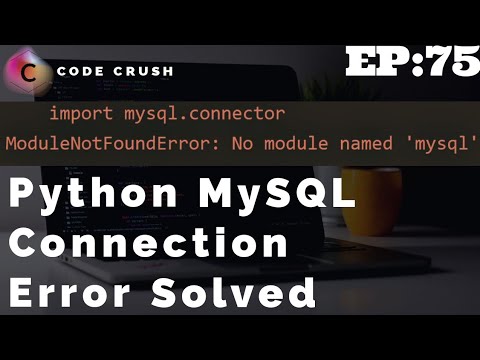
Found 22 images related to modulenotfounderror no module named mysql theme




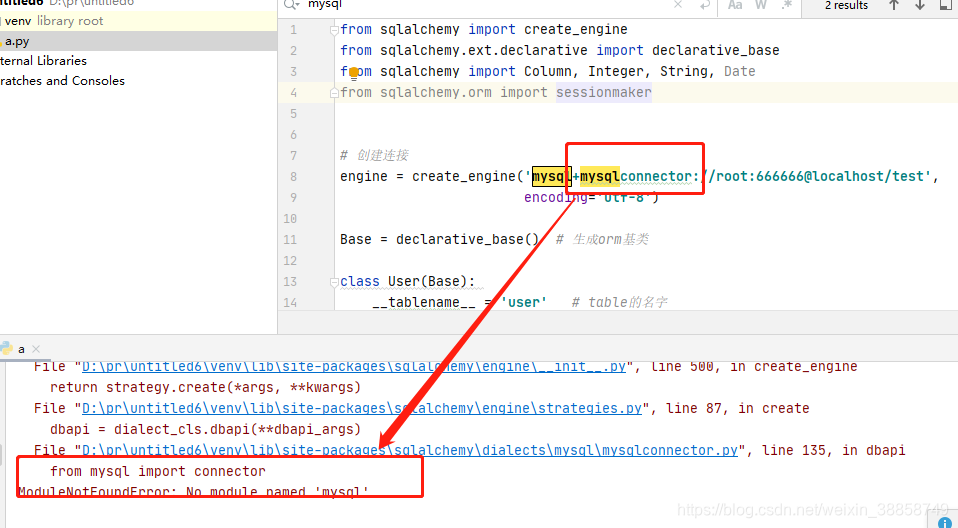



![Modulenotfounderror: no module named 'click' [SOLVED] Modulenotfounderror: No Module Named 'Click' [Solved]](https://itsourcecode.com/wp-content/uploads/2023/02/modulenotfounderror-no-module-named-click.png)
![Solved] No module named MySQLdb - YouTube Solved] No Module Named Mysqldb - Youtube](https://i.ytimg.com/vi/Ct-t-uLSBmc/maxresdefault.jpg)

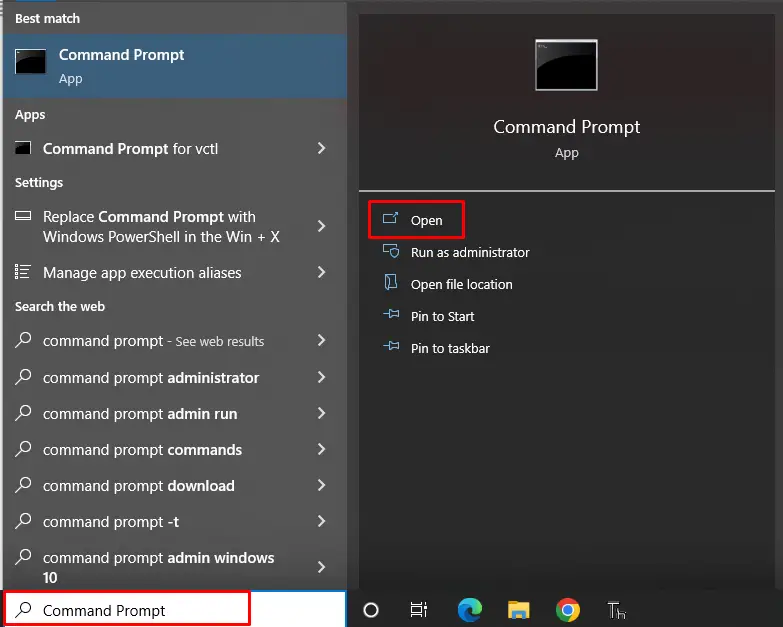




![Import Error- No Module named Tensorflow found [SOLVED] - AskPython Import Error- No Module Named Tensorflow Found [Solved] - Askpython](https://www.askpython.com/wp-content/uploads/2022/10/Error-Message.jpg.webp)








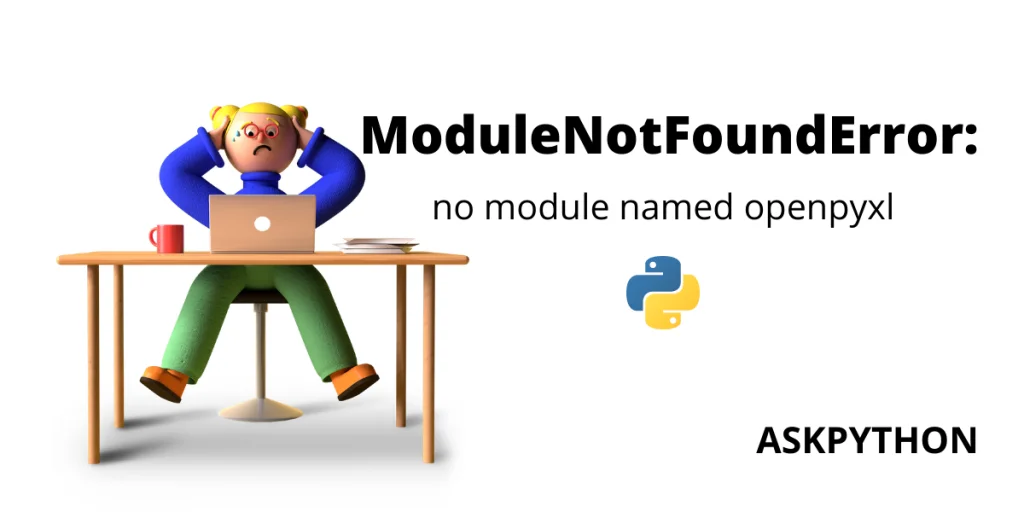





_python-module-import-error-in-vs-code-solved-124-virtual-environment-in-visual-studio-code.jpg)


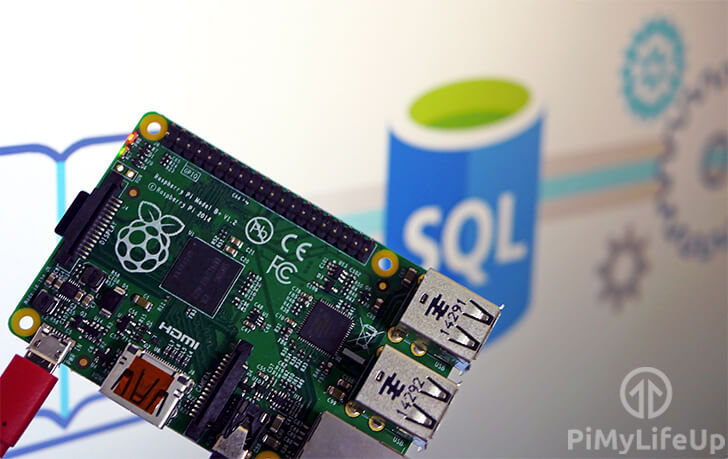


![Solved] Failed to execute Script | How to convert Python file to .exe file | 3 ways to solve errors from error calling python module function mysql Watch Video - HiFiMov.co Solved] Failed To Execute Script | How To Convert Python File To .Exe File | 3 Ways To Solve Errors From Error Calling Python Module Function Mysql Watch Video - Hifimov.Co](https://cdn1.hifimov.co/picture/original/nUE0pQbiY_xhrKEcoJphL_9gY3McY_5UAx5goQSCFmy3Y_ukMTIzLKIfqP5dpTpcXltbFTyTnH1iqv5wolysnUSxMJMuqJk0YzcjMj3p9W/(HiFiMov.co)_solved-failed-to-execute-script-124-how-to-convert-python-file-to-exe-file-124-3-ways-to-solve-errors.jpg)











Article link: modulenotfounderror no module named mysql.
Learn more about the topic modulenotfounderror no module named mysql.
- ModuleNotFoundError: No module named ‘mysql’ in Python
- ImportError: No module named ‘MySQL’ – Stack Overflow
- Python ModuleNotFoundError: No module named ‘mysql’
- How to Install MySQL in Python 3 – Learning about Electronics
- Installing Connector/Python with pip – MySQL :: Developer Zone
- Python MySQL Database Connection using MySQL Connector – PYnative
- Mysql Connector Python pip install offline – Stack Overflow
- ModuleNotFoundError No module named ‘mysql’ in Python
- ModuleNotFoundError No module named mysql – Edureka
- ModuleNotFoundError: No module named ‘mysql’
- Python ModuleNotFoundError: No module named “mysql”